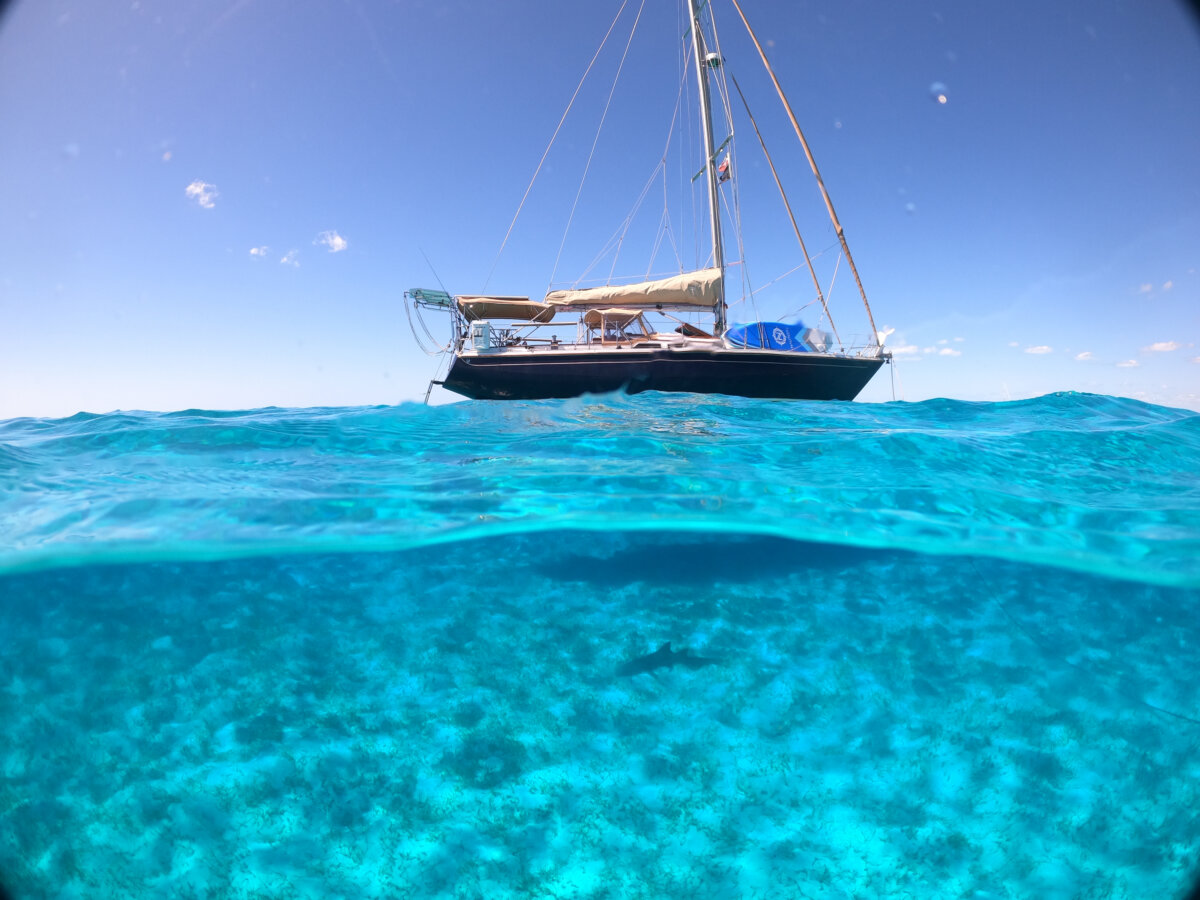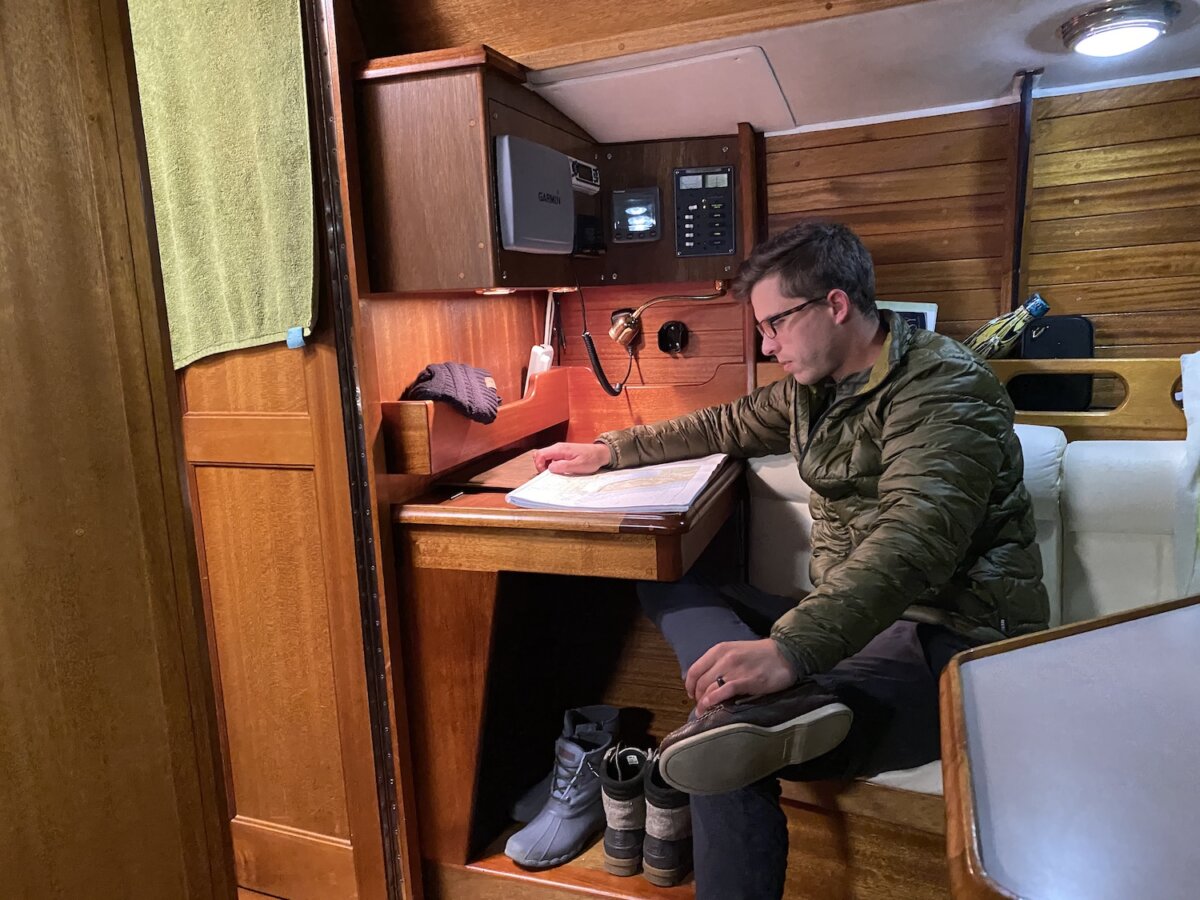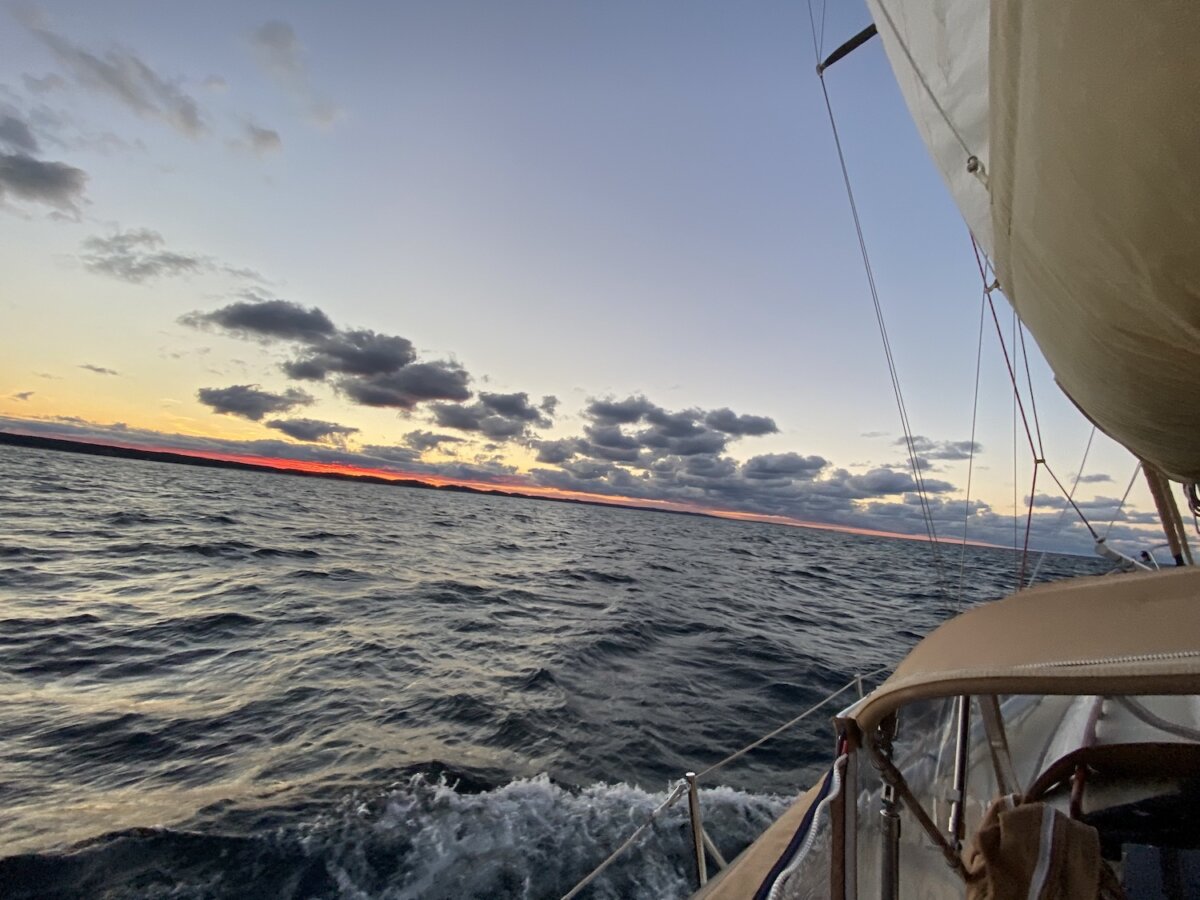Cruising is a challenging lifestyle but it gets easier the more you know. Here are some things we learned from our year onboard traveling from the Great Lakes, through the Erie Canal, down the East Coast and to the Bahamas.
General Cruising Lessons:
- Take the weather windows you get
This may seem obvious but it is not. We talked to many cruisers who stayed in the marina or anchorage afraid to move because another storm was coming in a day or two or for whatever other reason they gave. If the passage takes a day and you get the wind and weather for a day, you take it because it may not come around again for a while.
This may mean you motor through a calm instead of waiting for your perfect wind to sail. Our gulf stream crossing back to the U.S is a great example. We had settled weather then a night of strong winds and storms followed by another two days of calm. After that calm the forecast showed strong winds for several days followed by strong winds for several more days in another direction. We took the calm window, mostly motoring across back to the U.S. We were so glad we did because as we watched friends wait for their window and watched the wind and wave forecast there wasn’t another window for a while.
2. Don’t leave as the blow is dying- it won’t die as quickly as forecast
This lesson we learned so many times! You look at the forecast and see that the strong wind should be dying starting at say 11 am so you leave just after that. It may seem like the wind is really dying from your anchorage but once you are out there, you realize it isn’t. Then your sailing in heavier wind and waves than you wanted. So many times, if we had just waited a bit longer we would have had a more comfortable passage.
3. Amazon Lockers/Shipping to Marinas
We thought shipping things from Amazon to Amazon lockers would be easier. We found that unless the item is fulfilled by Amazon it won’t qualify to be shipped to a locker. Most boat parts or other random items we found ourselves in need of were not fulfilled by Amazon so the lockers weren’t an option. What we did find is that most marinas will let you ship something to them even if your not staying in a slip. We typically anchored wherever we went but the marinas don’t care or don’t track who is shipping items so we never had an issue. Just make sure to put your name and boat name on the package.
4. Catamarans and Monohauls act differently in current- anchor next to your own kind
We rode out many blows on anchor, often in places with strong tidal current. We learned quickly that catamarans will typically face the wind but monohauls will move with the current. Some monohauls will kind of sail around on anchor when its really windy. Our boat tends to do this alot so we need a fairly large radius if we are in an anchorage with strong current and strong winds are forecast. Its a good idea to stay onboard and see how the boats around you react when the current switches to make sure you are good before heading to shore.
U.S East Coast:
- Avoid Publix for your groceries
Our entire way down the coast we headed to whatever grocery store was the closest/walkable form the dinghy dock. As we got into the southern states that seemed to most often be a Publix. Wow were we shocked by how expensive everything was! On average our grocery bill for 1-2 weeks of groceries went up 25-30% compared to what we were used to spending at home (going to Meijer in Michigan). Our first shopping trip back in the U.S we used Instacart for Aldi and we were very pleasantly surprised by how much cheaper it was. We assumed using Instacart and paying the service and delivery fees would make that option more expensive but depending on what store you shop at that isn’t always the case. We continued to use instacart our entire way up the coast, mostly from Aldi stores and each time we found it much cheaper.
2. Noreasters
Wow! we knew noreasters were a think on the east coast but we didn’t realize how often they can occur. We had a pretty big blow/storm blow through nearly every week. It forced us inside, taking the ICW much of the way south.
3. Get at least one water jerry can, even if you have a water maker
We found this to be super helpful. Often the water isn’t very clean/clear so being able to top off along the way and not solely rely on our water maker saved us several times.
4. Not all towns, marinas along the ICW are cruiser/dinghy friendly
Not to say that people weren’t friendly and welcoming but not every town will have a dingy dock so you may find yourself struggling to figure out where to safely leave the dinghy if you want to go to shore for the day.
5. Being from Mi we didn’t realize how good we have it with our marina fees. We were not prepared for how expensive marinas are along the east coast and then you are often charged separately for power and water. We knew marinas would be expensive and we didn’t stay in them often. But it was a bit of sticker shock every time we did go into the dock.
Bahamas:
- Get a handline for fishing, they are cheap and work super well!
2. Stock your pantry well all non-perishables before you go. While we found pantry items available in stores more often than we anticipated they were most often much more expensive than in the U. S so we were glad we didn’t have to buy them.
3. Know what day the supply ship stocks the grocery store. That day and maybe the day after there will be fresh fruits/veggies and dairy but if you go several days later it will likely be very picked over. Typically they are supplied once a week
Hopefully these tips help you along your cruising journey!



